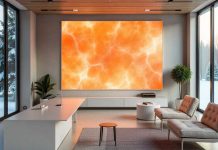As a functional and ornamental feature in interior design, statement lighting is essential for defining the character and style of a room. It draws attention and creates focal points, enhancing the overall ambiance while illuminating key areas. A well-chosen light fixture can dramatically transform a room, adding personality and complementing the decor. By selecting standout lighting options that reflect your taste and the room’s design, you can elevate the visual impact and create a cohesive look.
Choosing the Right Fixture
When selecting statement lighting, aligning your choice with your overall design goals is essential to ensure harmony and coherence within the space. The right lighting fixture should complement your existing decor and enhance the room’s ambiance, whether you aim for a modern, classic, or eclectic look. You can choose a piece that becomes the center of attention and blends in well with your design scheme by considering elements like size, style, and function. Thoughtfully chosen statement lighting can elevate the aesthetic appeal of a room and reinforce the desired atmosphere, making it a crucial element of any well-designed interior.
Consider Your Space
Different areas of your home may benefit from other types of statement lighting. For example, a dramatic chandelier might work well in a dining room, while a unique floor lamp could be the perfect addition to a living space. Consider the room’s size and scale when choosing your fixture. A prominent fixture in a small room overwhelms the space, while a too-small fixture in a large room needs to be noticed. Measure your rooms and consider the heights of your ceilings to select a piece that fits naturally within the space. Consider the light’s output; a dim corner may require a fixture with brighter output for functional lighting, while an already well-lit area might need a beautiful accent piece.
Layering Your Lighting
Layered lighting is critical to a well-lit home. Combining ambient, task, and accent lighting guarantees that your area looks good and is functionally sound. Use statement lighting as your accent to draw attention to particular areas or features within a room. Accent lighting adds drama and visual interest, task lighting concentrates on certain work areas, and ambient lighting offers general illumination. For example, use recessed lighting or wall sconces for ambient lighting, desk lamps or under-cabinet lights for task lighting, chandeliers, pendant lights, or unique lamps for accent lighting. Layering these various types of lighting addresses the room’s specific needs and adds depth and dimension to the space.
Color and Material Choices
The color and material of your lighting fixture play a crucial role in how well it integrates with your existing décor. For instance, metal fixtures often add a sleek, industrial feel, while wood can bring warmth and a natural element to your space. Choosing the suitable material involves more than just aesthetics; it also speaks to the durability and maintenance of the fixture. Glass, crystal, and metals are typically easier to clean but may show fingerprints and smudges more visibly. Fabrics and other soft materials may accumulate dust and require more diligent upkeep. Matching the color palette of your fixture with your furniture, walls, and different room elements creates a harmonious look.
Resources:
https://www.homesandgardens.com/news/lighting-trends-207692
https://www.visualcomfort.com/
https://medium.com/@StyleSweetHome/what-is-statement-lighting-ef21908f9e86










